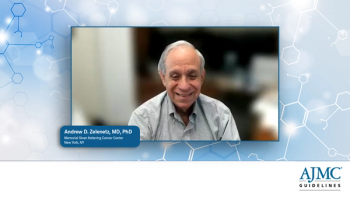
Dry Eye Disease: Pathophysiology, Impact, and Standard of Care
A panelist discusses how dry eye disease involves tear film imbalance, leading to inflammation and ocular surface damage, emphasizing the importance of precise diagnosis and tailored treatment while acknowledging ongoing challenges with patient expectations, medication access, delayed symptom relief, and treatment adherence.
Episodes in this series

Dry eye disease is a complex condition characterized by a disruption in tear film balance, leading to increased tear film osmolarity and instability. This cascade results in inflammation and damage to the ocular surface. Proper diagnosis requires a thorough clinical examination, including tests such as tear breakup time, osmolarity measurement, and ocular surface staining with specific dyes. Identifying whether a patient has evaporative dry eye, aqueous-deficient dry eye, or a combination of both is critical for tailoring treatment effectively.
The current treatment algorithm prioritizes addressing tear volume and inflammation. For aqueous-deficient dry eye, preservative-free artificial tears are the first step, often supplemented with punctal plugs to retain moisture. To target inflammation, topical agents such as cyclosporine and lifitegrast drops are used frequently, sometimes combined with mild corticosteroids such as loteprednol or fluorometholone to reduce inflammatory processes. These pharmacologic treatments aim to break the cycle of inflammation and restore ocular surface health.
Despite these options, significant gaps remain in managing dry eye disease. One challenge is aligning patient expectations with clinical outcomes, as symptoms and signs often do not correlate. The cost of medications and insurance coverage can limit access to these treatments. Moreover, many patients experience a delay in symptom relief, often needing weeks to months of consistent use before noticing improvement. Additionally, adverse effects such as burning or stinging upon drop instillation can negatively impact adherence, making long-term treatment challenging. These factors highlight the need for continued advances to improve tolerability, accessibility, and effectiveness in managing dry eye disease.
Newsletter
Stay ahead of policy, cost, and value—subscribe to AJMC for expert insights at the intersection of clinical care and health economics.












































